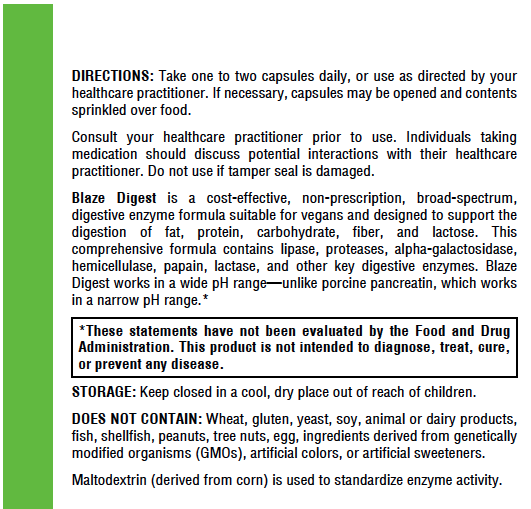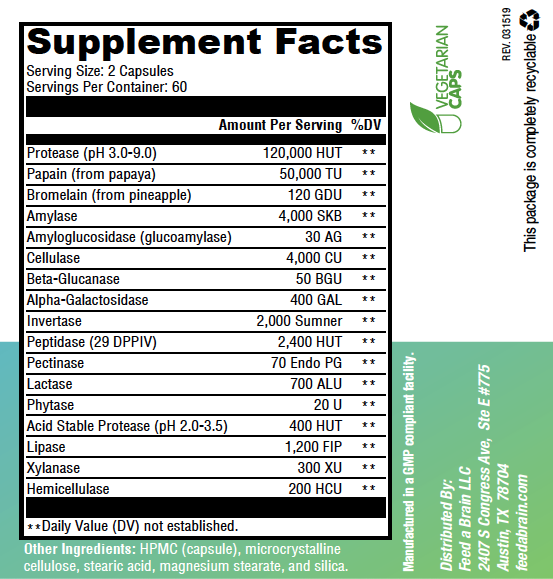Our pancreas is responsible for producing a lot of the enzymes we need to digest our food, but a lot are also produced by the lining of our small intestine. Our pancreas can become taxed or damaged by certain medications, alcohol consumption, and various medical conditions. The lining of our intestinal tract can be damaged by inflammatory proteins found in grains and dairy, antibiotics in our food, certain over the counter medications like ibuprofen among others, imbalances in our gut bacteria, and more.
Our digestion is all part of a connected system. If one link in the chain is broken, then it creates many problems downstream. Ever had your food feel like it was sitting in your stomach for a long time and like it wouldn’t move? This could be from low protease or pepsin. Ever had fatigue, joint pain, or brain fog after eating a meal? This could be from low levels of enzymes or dysbiosis. If you aren’t digesting your food, then there is a high likelihood that other opportunistic microbes will eat it first like yeast or ammonia-forming microbes.
This can create dysbiosis which is simply an imbalance of microbes in our mouth, esophagus, stomach, or intestinal tract. These microbes can create colonies called biofilms that latch onto the intestinal tract which can cause leaky gut syndrome or intestinal permeability. This means that undigested food particles, microbial waste, or other endotoxins can enter our bloodstream. When food enters our bloodstream undigested, our immune system acts the same way it would if there were a splinter or any other foreign bodies entering our system: it doesn’t recognize these compounds and attacks them as if they were foreign pathogens.

This can cause chronic, low-grade, inflammation throughout our entire body which can lead to chronic anxiety, depression, low energy levels, joint pain, skin issues, brain fog, and a host of other issues. The stomach acid is our first line of defense is getting rid of unwanted microbes in our food, and the second step is broad spectrum of enzymes.
The problem is that many enzymes on the market are derived from pigs who have a much lower acidity in their stomach which means that these enzymes break down under normal conditions in a human stomach. This is not good if you want the enzymes to actually work so we need acid stable enzymes. Now you might know that many foods contain enzymes that help boost absorption, but cooking and various kinds of processing can break down these enzymes.
Many foods like beans, grains, tubers, peanuts, and many other foods must be cooked to break down antinutrients like lectins. This leaves us with little to no enzymes left to break down these nutrients. This is why a broad spectrum of enzymes can be so beneficial like phytase, betaglucanase, xylanase, etc. These can help break down compounds like phytic acid, beta glucans, xylan, and other plant-based fibers that cause flatulence or digestive distress.
Now fiber is good for our gut bacteria because they love to eat that stuff, but fiber can also absorb our stomach acid and decrease the activation of pepsin leading to decreased uptake of amino acids from protein. Also, if our food is wrapped in fiber, which humans cannot digest, then lots of nutrients can be locked up in this fiber. This is another reason why chewing well is so important, but also why adequate stomach acid, a broad spectrum of enzymes, and the right kinds of probiotics are crucial steps in this puzzle of digestion.
Read the doctors reference sheet for Blaze🔥Digest.




Reviews
There are no reviews yet.